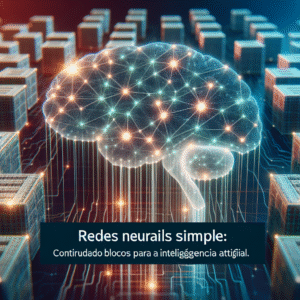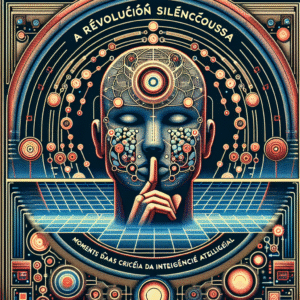Artificial Intelligence (AI) has become an integral part of our daily lives, influencing everything from the way we work to how we relax at home. At the heart of AI are technologies called Machine Learning (ML) and Neural Networks, which together empower machines to learn from experience, adapt, and make decisions. This guide provides a foundational understanding of these technologies, shedding light on their mechanisms, applications, and future potential.
Understanding Machine Learning
Machine Learning is a subset of AI focused on the idea that machines can learn from data, identify patterns, and make decisions with minimal human intervention. Rather than being explicitly programmed for specific tasks, ML algorithms learn by example.
Key Concepts in Machine Learning
-
Data: ML relies on large datasets to train algorithms. The quality and amount of data often determine the success of a machine learning model.
-
Algorithms: These are the mathematical models that process data. Common algorithms include decision trees, support vector machines, and k-nearest neighbors.
-
Training and Testing: The process begins with training the algorithm using a dataset. Once trained, the model is tested on unseen data to evaluate its performance.
-
Supervised vs. Unsupervised Learning:
- Supervised Learning: The model is trained on a labeled dataset, meaning that the input comes with a correct output. This approach is used for tasks like classification and regression.
- Unsupervised Learning: Here, the model is given data without explicit instructions on what to do. It’s often used for clustering and association tasks.
- Reinforcement Learning: This is a type of learning where an algorithm learns to make decisions by receiving rewards or penalties. It’s commonly used in robotics and game AI.
Introduction to Neural Networks
Neural Networks (NNs) are inspired by the human brain’s architecture and are a fundamental part of deep learning, a subset of ML. They are composed of layers of nodes, or ‘neurons,’ which mimic the neurons in a human brain.
Structure of Neural Networks
-
Neurons: The basic unit of a neural network. Each neuron receives inputs, processes them, and passes on an output.
-
Layers: Neural networks have input layers, hidden layers, and output layers. The complexity of tasks a network can handle often increases with more hidden layers.
-
Activation Functions: These determine if a neuron should be activated. Common functions include the sigmoid, ReLU (Rectified Linear Unit), and tanh.
- Backpropagation: This is the method used to update the weights of the connections in the network. It helps to minimize the error rate of a model by adjusting weights in response to the error found in each iteration.
Building Blocks of Neural Networks
-
Feedforward Neural Networks: The simplest type of artificial neural network, where connections between the nodes do not form a cycle.
-
Convolutional Neural Networks (CNNs): Primarily used for image processing. They leverage convolutional layers to filter inputs for useful information.
- Recurrent Neural Networks (RNNs): Ideal for sequence prediction problems, RNNs maintain a memory of previous inputs through their recurrent connections which is useful in time series data.
Applications of ML and Neural Networks
Healthcare
AI is transforming healthcare by improving diagnostic accuracy and personalizing treatment plans. Machine learning models analyze medical imagery to detect diseases such as cancer at early stages. Neural networks enable the development of smart prosthetics and personalized medicine.
Finance
Machine learning algorithms are widely used in finance for fraud detection, risk management, and automated trading. Neural networks analyze vast amounts of transactional data to identify unusual patterns indicative of fraud.
Automotive Industry
AI is driving innovation in autonomous vehicles by using neural networks to interpret data from sensors and cameras, enabling vehicles to make real-time decisions on the road.
Natural Language Processing (NLP)
Both ML and neural networks are at the core of language processing technologies, including voice recognition systems, chatbots, and translation services.
Challenges and Ethical Considerations
While ML and neural networks offer enormous potential, they come with challenges and ethical responsibilities.
-
Data Privacy: AI systems can process vast amounts of personal data, raising concerns over privacy and consent.
-
Bias and Fairness: Algorithms can perpetuate biases found in their training data, leading to unfair outcomes in areas like hiring and law enforcement.
- Transparency: Machine learning models, especially deep networks, can be opaque, making it difficult to interpret decisions. This raises questions about accountability.
The Future of AI
The future of AI, driven by advances in machine learning and neural networks, promises significant transformations across industries. Continued research is focused on enhancing the interpretability, robustness, and ethical grounding of AI technologies.
Innovations such as quantum computing may further accelerate AI capabilities, allowing systems to solve complex problems currently beyond the reach of classical computing.
Furthermore, the integration of AI with Internet of Things (IoT) could lead to smart environments that adapt to human needs, signaling an era of unprecedented technological symbiosis.
Conclusion
Machine Learning and Neural Networks stand as the cornerstone of modern AI, providing machines with the ability to learn from data and make informed decisions. By understanding the basic concepts and applications of these technologies, we can better appreciate their impact and anticipate the ethical and societal considerations they entail. As research advances, we are poised to witness AI’s ever-expanding influence, shaping the future in ways we have only begun to imagine.
Through innovation and responsible use, the journey into the world of AI promises to be as transformative as it is exciting, offering endless possibilities for growth and understanding in nearly every facet of life.




